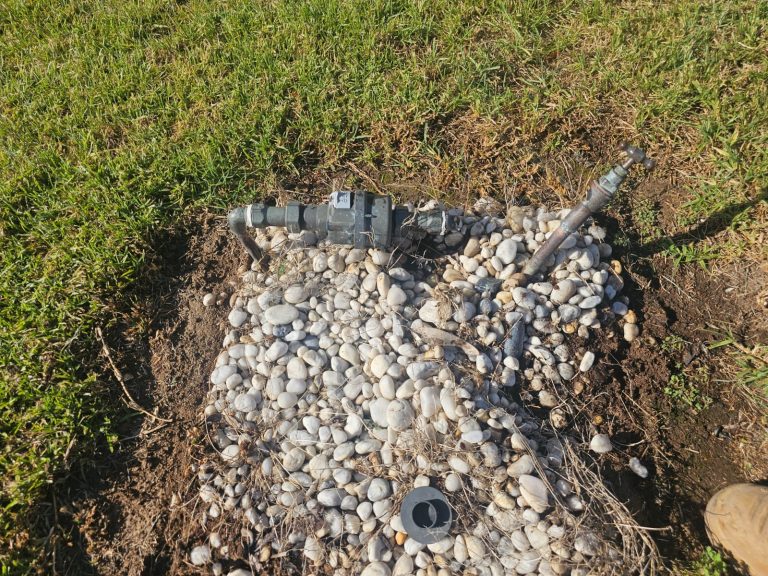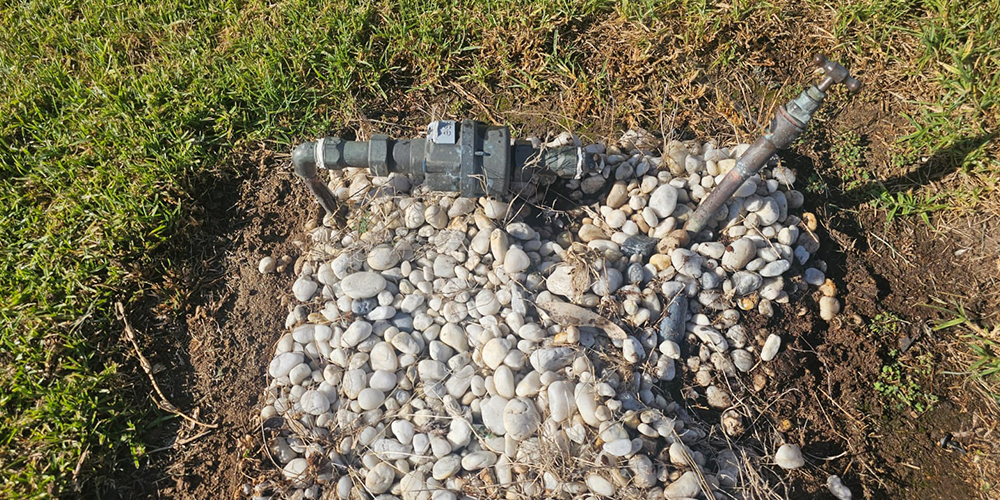
A burst water pipe can quickly turn into a homeowner’s nightmare, causing extensive water damage, costly repairs, and potential health hazards like mold growth. Whether it’s a small leak or a major break, acting fast is crucial to minimize the damage. If the damage is extensive or beyond your expertise, don’t hesitate to call a professional Sydney plumber for a safe and effective burst pipe repair.
Water pipes can burst due to various reasons, including extreme temperatures, aging pipes, excessive water pressure, or accidental damage. Understanding what causes pipe bursts and knowing how to respond effectively can save you from expensive repairs and inconvenience.
In this guide, we’ll walk you through everything you need to know about fixing a burst water pipe, from identifying the problem and taking immediate action to making both temporary and permanent repairs. By following this step-by-step process, you can quickly contain the damage and restore your plumbing system without unnecessary stress.
In this blog, we’ll show you how to fix a burst water pipe. If you need expert help, Check out our leak detection services for a fast, reliable fix.

Identifying a Burst Pipe
Detecting a burst pipe early can help minimize water damage and reduce repair costs. Here’s how to identify if a pipe has burst in your home.
Signs of a Burst Pipe
A burst pipe may not always be visible, especially if it’s inside walls, floors, or underground. Look for these common warning signs:
- Low Water Pressure – A sudden drop in water pressure, especially in multiple fixtures, can indicate a leak or burst pipe.
- Unexplained Water Puddles – Pools of water in unusual places, like under cabinets, on floors, or outside your home, may signal a pipe break.
- Damp or Discolored Walls and Ceilings – Water stains, peeling paint, or bubbling wallpaper can indicate a hidden leak.
- Unusual Sounds – If you hear hissing, gurgling, or banging noises in your walls, it could be a sign of a leaking or burst pipe.
- Higher Water Bills – A sudden spike in your water bill without increased usage suggests water is escaping somewhere in your plumbing system.
- Mold or Musty Smells – Persistent dampness leads to mold growth, which thrives in hidden leaks behind walls or under flooring.
- Running Water Meter – If you turn off all faucets and appliances, yet your water meter keeps running, there’s a leak somewhere in your system.
How to Locate the Burst Pipe
- Inspect Visible Pipes – Check under sinks, in basements, in crawl spaces, and in outdoor pipes for obvious leaks or damage.
- Follow the Sound – If you hear water dripping or rushing inside walls, try pinpointing the location.
- Look for Water Damage – Damp spots, warped wood, or cracked walls can help locate hidden leaks.
- Use a Moisture Meter – A moisture meter can detect excess dampness behind walls or floors.
- Infrared Cameras – Some homeowners and plumbers use infrared cameras to detect temperature differences in walls and floors, revealing hidden leaks.
Also read: How Much Does a Burst Pipe Repair Cost
Immediate Actions to Take Before Repairing
When a pipe bursts, quick action can prevent extensive water damage. Follow these steps immediately to control the situation before making any repairs.
Step 1: Turn Off the Main Water Supply
- Locate your home’s main water shut-off valve (usually found near the water meter, in the basement, crawl space, or outside along an exterior wall).
- Turn the valve clockwise to shut off the water supply and stop further leakage.
- If you live in an apartment, notify the building management or maintenance team immediately.
Step 2: Drain the System
- Open all cold water taps and flush toilets to drain any remaining water from the pipes.
- Then, turn off the water heater and open the hot water taps to clear the hot water lines.
- This step helps reduce pressure in the system and prevents further leaks.
Step 3: Shut Off Electricity If Necessary
- If water is leaking near electrical outlets, appliances, or the circuit panel, turn off the power at the main breaker to prevent electrical hazards.
- Avoid stepping into standing water if electrical connections are nearby—call a professional for assistance.
Step 4: Identify the Pipe Material
- Pipes can be made of copper, PVC, PEX, or galvanized steel. Knowing the material helps determine the best repair method.
- Copper pipes may require soldering, while PVC and PEX pipes can be repaired using couplings or push-fit connectors.
Step 5: Gather Necessary Tools and Materials
Before you start the repair, ensure you have the right tools and materials:
- Pipe cutter or hacksaw
- Adjustable wrench
- Pipe sealant or epoxy putty
- Pipe repair clamps
- Replacement pipe sections
- Plumber’s tape (Teflon tape)
- Bucket and towels for cleanup
Step 6: Contain the Water Leak
- Use towels, buckets, or a wet/dry vacuum to soak up excess water.
- If the leak is large, use a plastic sheet or tarp to protect furniture and flooring from further damage.
Step 7: Assess the Damage
- If the pipe burst has caused extensive structural damage (such as waterlogged walls, flooring, or ceilings), take photos for insurance purposes.
- Contact a plumber or restoration service if the damage is beyond a DIY repair.
Temporary Fixes to Stop the Leak
Once you’ve controlled the situation by shutting off the water supply, it’s time to apply a temporary fix to prevent further damage until a permanent repair can be made. Here are several effective methods:
1. Using a Pipe Clamp (Quick and Effective for Small Leaks)
- Ideal for small cracks or pinhole leaks in metal or PVC pipes.
- A pipe clamp consists of a rubber patch and a metal clamp that tightens around the damaged area.
How to Apply a Pipe Clamp:
- Dry the pipe surface using a towel.
- Position the rubber patch over the leak.
- Secure the clamp over the rubber patch and tighten it with a wrench.
- Turn the water supply back on and check for leaks.
2. Applying Epoxy Putty or Pipe Repair Tape (Best for Minor Cracks)
- Works well for small cracks or pinhole leaks in metal, PVC, or PEX pipes.
- Epoxy putty hardens like metal, creating a durable seal.
- Pipe repair tape (self-fusing silicone) wraps around the pipe to stop leaks temporarily.
When to Call a Plumber
- Dry the pipe surface completely.
- Wear gloves and knead the putty until it turns a uniform color.
- Apply the putty directly over the crack, pressing firmly.
- Let it cure for the recommended time (30-60 minutes).
How to Use Pipe Repair Tape:
- Stretch the self-fusing silicone tape and wrap it tightly around the pipe.
- Overlap each layer by 50% for a strong seal.
- Let it bond for several hours before turning the water back on.
3. Using a Rubber Patch and Hose Clamp (Good for Larger Holes)
- Works best for larger cracks or holes in metal or PVC pipes.
- A rubber patch provides a waterproof seal, while a hose clamp keeps it in place.
How to Use This Method:
- Cut a piece of rubber (from an old hose or rubber sheet) slightly larger than the hole.
- Place the rubber patch over the leak.
- Secure it with two hose clamps, tightening them with a screwdriver.
- Turn the water back on to check for leaks.
4. Pipe Sleeves and Quick-Fix Connectors
- Best for hairline cracks in copper or PVC pipes.
- A pipe sleeve is a small section of pipe that fits over the damaged area and is sealed with adhesive.
- Push-fit connectors allow quick, tool-free pipe connections.
How to Apply a Pipe Sleeve:
- Cut out the damaged section using a pipe cutter.
- Insert the pipe sleeve over the damaged area.
- Secure it with pipe adhesive or clamps.
How to Use Push-Fit Connectors:
- Cut out the damaged section.
- Push the connector fittings onto both ends of the existing pipe.
- Ensure a tight, leak-proof seal.
Also read: Plumbing Emergencies That Need Immediate Attention
Permanent Solutions for Fixing the Burst Pipe
Once you have applied a temporary fix to stop the leak, it’s time to permanently repair or replace the damaged section of the pipe. Here are different methods based on the type of pipe and the severity of the burst.
1. Replacing a Damaged Section of Pipe (Best for Severe Bursts)
If the pipe has a large rupture or is old and corroded, replacing the damaged section is the most effective long-term solution.
Tools and Materials Needed:
- Pipe cutter or hacksaw
- Replacement pipe (copper, PVC, or PEX)
- Couplings or push-fit connectors
- Plumbing tape (Teflon tape)
- Pipe wrench
How to Replace the Burst Pipe Section:
- Turn off the Water Supply – Ensure no water is running through the system.
- Measure and Mark the Damaged Section – Use a marker to identify the portion that needs to be cut.
- Cut Out the Burst Pipe – Use a pipe cutter or hacksaw to remove the damaged section.
- Prepare the New Pipe Section – Cut a replacement pipe to the exact length of the removed section.
- Tighten and Seal the Joints – Use Teflon tape for threaded joints and ensure all connections are secure.
- Turn the Water Back On – Check for any leaks and tighten connections if necessary.
- Connect the New Pipe:
- For copper pipes, use soldering or compression fittings.
- For PVC pipes, use solvent cement and couplings.
- For PEX pipes, use push-fit connectors or crimp rings.
2. Soldering a Copper Pipe (For Small to Medium Leaks in Copper Pipes)
If you have a copper pipe with a small crack, you can repair it using soldering (also called “sweating the pipe”).
Steps for Soldering a Copper Pipe:
- Turn off the water and drain the pipe.
- Use sandpaper or a pipe brush to clean the area around the leak.
- Apply flux to the cleaned surface.
- Heat the pipe with a propane torch and apply solder to the joint.
- Let it cool and check for leaks before restoring water flow.
3. Using Slip Couplings (For Quick, Permanent Repairs Without Cutting)
- Best for copper or PEX pipes with small leaks.
- Slip couplings don’t require cutting out a pipe section and can be installed easily.
How to Install a Slip Coupling:
- Clean the pipe surface.
- Slide the slip coupling over the damaged area.
- Tighten it using a wrench (for copper) or push it into place (for push-fit PEX couplings).
- Check for leaks after turning the water back on.
4. Replacing PVC Pipes (For Drain and Supply Lines)
If the burst pipe is PVC, the best fix is cutting and replacing the damaged section.
How to Fix a PVC Pipe Burst:
- Use a hacksaw to cut out the broken section.
- Dry-fit the replacement pipe and mark where the joints will go.
- Apply PVC primer and cement to both the pipe and coupling ends.
- Insert the new section and let it dry completely before testing.
5. Using Pipe Sleeves or Pipe Wraps (For Minor Leaks)
If the damage is not severe, a pipe sleeve or permanent wrap can reinforce the weak spot and prevent future leaks.
- Pipe sleeves can be glued or clamped over the damaged section.
- Epoxy wraps can be applied like a bandage and harden over time.
When to Call a Plumber for Permanent Repairs
- If the burst pipe is inside a wall, ceiling, or underground.
- If you lack the tools or expertise for permanent fixes.
- If you notice multiple pipe leaks, indicating a larger plumbing issue.
Once the repair is complete, it’s important to prevent future pipe bursts.
Conclusion
Dealing with a burst water pipe can be stressful, but quick action and the right repair techniques can minimize damage and restore your plumbing system efficiently. Whether you use temporary fixes like pipe clamps and epoxy putty or permanent solutions like pipe replacement and soldering, the key is to act fast and choose the most suitable repair method for your situation.
Regular maintenance, proper insulation, and monitoring your plumbing system can help prevent future pipe bursts, saving you from costly repairs and water damage. If the damage is extensive or beyond your expertise, don’t hesitate to call a burst pipe repair Sydney plumber for a safe and effective fix.
By staying proactive and prepared, you can protect your home from plumbing emergencies and ensure a reliable water supply all year round.


